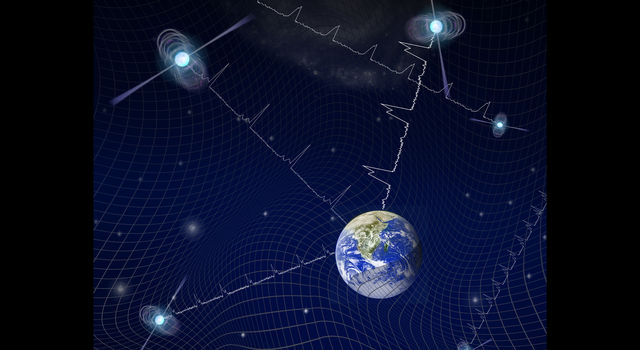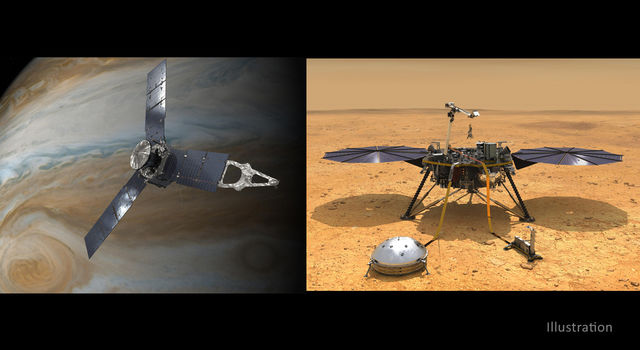Blogs | Rocks and Stars with Amy | November 5, 2009
Hi Ho, Hi Ho, It's Into Space We Go
With WISE a mere month away from liftoff, it's probably a little late to be asking why we need to send it into space. But it's worth taking the time to explain why we go to all the trouble of sending something up on a rocket. While it's really cool to go into space, we're not just sending WISE up there for the fun of it. In this case, there's no other reasonable way to accomplish the mission's science goals: surveying the entire sky in infrared, finding the nearest star to our sun, and finding the most luminous galaxy in the universe. We can't do this from the ground.
It turns out that the main culprit that drives us into space and into an orbit more than 500 kilometers (about 360 miles) above the Earth's surface is our atmosphere. As wonderful as our atmosphere is for life on Earth, it wreaks havoc on astronomical images in many ways. For one, shifting pockets of warm and cool air drifting above a telescope -- or a human observer-- cause stars to twinkle. While pretty, this twinkling makes it difficult to get a good measurement of a star's true brightness (or, in astronomical terms, its "photometry"). The twinkling also reduces the telescope's sensitivity and resolution by enlarging the images it produces, making them blurrier and less sharp. This is true for all kinds of telescopes not just infrared ones.
Secondly, the atmosphere acts like a sponge at many wavelengths, soaking up light from the stars so that it never reaches the ground at all. Everybody's seen a rainbow at one time or another, and that range of colors -- from violet to red -- spans the maximum range of wavelengths that our eyes can see. But that is only a small fraction of the entire spectrum of light that's really out there in the universe. Our sun puts out most of its radiation in visible light, and most of that visible light makes it through our atmosphere to the ground. However, our atmosphere is only partially transparent to infrared wavelengths. Filled with water vapor, carbon dioxide, and methane, our atmosphere absorbs almost all infrared light, so most of the infrared light emitted by distant stars, asteroids, and planets doesn't make it to observers on the ground. These molecules grab infrared light and trap it, preventing it from passing through the atmosphere (which is why they are called greenhouse gases). To see anything at all in most infrared colors, we have to get entirely above the Earth's atmosphere.
The final problem posed by our atmosphere for infrared astronomers is that it -- and the Earth itself -- is warm. Infrared light is characteristically emitted by room-temperature objects. Objects like you and I glow brightly in infrared light, and so does the Earth and its atmosphere. If you could see in infrared light, the night sky would look as bright as daylight! So when we're trying to detect the faint heat signatures of distant astronomical objects, a glowing, warm atmosphere is almost impossible to see through. This is why we must cool the WISE telescope to a mere 12 degrees above absolute zero (minus 438 Fahrenheit). Being in space with a cold telescope makes such a huge difference that the relatively modest-size WISE telescope, which is 40 centimeters (16 inches) in diameter, is equivalent in sensitivity to literally thousands of 8-meter (26-foot) telescopes on the ground. That small WISE telescope packs a punch.
So with that cleared up, we're just about ready to put WISE into the nose cone and crane it up onto the Delta II rocket that's waiting for us on the launch pad. Let's go see some stars!
TAGS:WISE, ASTEROIDS & COMETS, SPACECRAFT, MISSION, UNIVERSE







